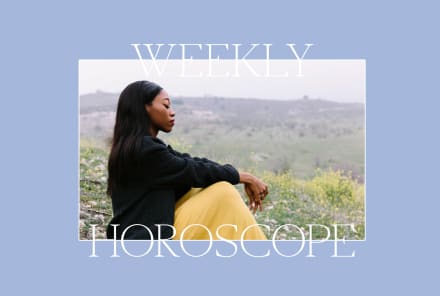Advertisement

Make an appointment with yourself.
The life-hack-focused New York Times Smarter Living newsletter has advised, "Take time to reflect. Schedule it in your calendar and give yourself the space to think. You'll make progress even if it's just a few hours every other week."
And a group of academic researchers, specifically looking at how to make the most of, or at least cope with, commuting time, posited the notion of a "pocket of freedom." This turned on a focus on what individuals can control—in this case, how to spend one's time.
This could be:
- Scheduling creative play
- Scheduling personal reflection
- Scheduling specific passion-project focus
What unites these is a commitment to making the time to attend to what really matters to you—a sort of jujitsu on the culture of scheduling and commitment that hogs so much of our attention.
But you don't need to spend your time with yourself working on anything. Maybe you just need to show up at Café Pedlar (or wherever) and commit to absolutely no distractions from whatever you want to think about.
Experience the place you're in. Mull a personal matter or some combination of them. It's so easy to build our time around and commit to obligations from without. Maybe it's not so hard to hijack that instinct and use it to trick ourselves into committing to ourselves.
Be alone in public.
To some people, eating alone feels like the scene from the 1984 movie The Lonely Guy in which the character played by Steve Martin requests a table for one. A giant spotlight is triggered, and patrons fall silent to follow his journey through the crowded room to his solo table.
Educator Andrew Reiner described in a New York Times essay how he asks students to get over this fear, with a particularly draconian assignment. "Eat in a crowded university dining room," he commands, "without the company of schoolwork, laptops, or smartphones. Or friends." There's something to be said for trying this out.
Reiner is teaching intimacy, connection, and vulnerability—particularly in the social networking era. Many students are unnerved by this assignment, feeling judged and self-conscious.
But one interesting study challenges our underlying fears of being alone and judged. Researchers intercepted and nudged college students to make a quick visit to an art gallery, either alone or in a group. Subjects were asked to gauge how much they figured they would enjoy the experience. Those who had to go it alone were notably more pessimistic about the prospect.
But they needn't have been. "There was no statistically significant difference in how solo people and group members rated the experience afterward," the researchers found, according to an item on New York magazine's Science of Us site. "Everyone had the same amount of fun." It's not a penalty to spend time alone. It's an opportunity—to exist totally free of anyone else's expectations, or your smartphone.
Make a personal map.
The organizers of a project called "Where You Are" asked 16 writers and artists to make maps—but of a very particular kind. Photographer and writer Valeria Luiselli's "Swings of Harlem" documented a specific piece of playground equipment across a particular geographic area.
Denis Wood, known in part for his original thinking on cartography, hand-drew a map as memoir (titled "The Paper Route Empire") to capture Cleveland as it exists in his childhood memories.
Novelist Adam Thirlwell mapped "Places I've Nearly Been to but Have Not." Author and artist Leanne Shapton painted "tablescapes," depicting objects on her desk at various moments.
These projects were fascinating because they portrayed the artists' personal maps. Devising these documents required creative and careful observation.
Think, then, about the variety of territories you may know, or seek to know. Using paper and pen, your smartphone camera, or whatever medium you like, make your own personal map.
- Map the points of interest within your home, according to your dog.
- Map the most boring features of your commute.
- Map the sounds of your neighborhood.
- Map the textures in your office.
- Map your favorite flavors around town.
- Map the empty shelf slots of out-of-stock products at your local grocery store.
Keep going.
Unitask.
It was with some fascination that I read blogger Jason Kottke's confession that he finds mowing the lawn "extremely satisfying." He claimed he could achieve both "euphoric giddiness" and a "simultaneously calming" feeling from "making all the grass the same height, surrounding the remaining uncut lawn with concentric rectangles of freshly mowed grass."
He also praised the virtues of bagging groceries: "Getting all those different types of products—with their various shapes, sizes, weights, levels of fragility, temperatures—quickly into the least possible number of bags...quite pleasurable. Reminds me a little of Tetris."
It sounds weird, but this is actually called unitasking, or monotasking—a willfully one-thing-at-a-time antidote to the endlessly hyped notion of multitasking. Unitasking can involve devoting your undivided attention to a single conversation or to reading a novel, but it's most intriguing when applied to something that has no intrinsic appeal at all.
There's nothing wrong with watching Netflix while folding clothes or enjoying a podcast while scrubbing the sink. But game designer and philosopher Ian Bogost makes a case for giving mundane tasks like cleaning and folding laundry your full attention rather than distracting yourself with simultaneous entertainment. Specifically, he makes the case for mowing the lawn.
The key here, in Bogost's thinking, is recognizing that the something you may discover doesn't come from you but from your openness to whatever you're unitaskingly doing. "It wasn't you who had to come up with that meaning," Bogost said. "It was given to you by the world. And once you get yourself on that path where you're willing to find something delightful in laundry and in dishwashers, it means that you train yourself to be able to find it almost anywhere in almost anything."
So go mow the lawn.
Watch Next
Enjoy some of our favorite clips from classes
Enjoy some of our favorite clips from classes
What Is Meditation?
Mindfulness/Spirituality | Light Watkins
Box Breathing
Mindfulness/Spirituality | Gwen Dittmar
What Breathwork Can Address
Mindfulness/Spirituality | Gwen Dittmar
The 8 Limbs of Yoga - What is Asana?
Yoga | Caley Alyssa
Two Standing Postures to Open Up Tight Hips
Yoga | Caley Alyssa
How Plants Can Optimize Athletic Performance
Nutrition | Rich Roll
What to Eat Before a Workout
Nutrition | Rich Roll
How Ayurveda Helps Us Navigate Modern Life
Nutrition | Sahara Rose
Messages About Love & Relationships
Love & Relationships | Esther Perel
Love Languages
Love & Relationships | Esther Perel


















